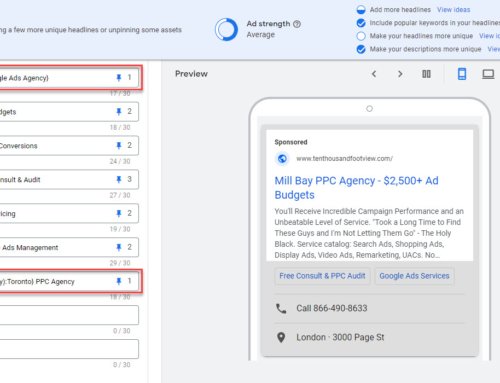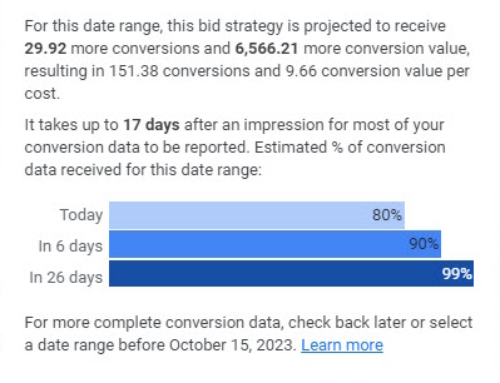In a world of big machine like brands competing in search engine marketing, it can be difficult to be the little guy. Sure you have a superior product at a great price but you probably don’t have a budget or the time for brand development. But, you need sales NOW!
If you’re already working with Google AdWords or Bing Ads you know how great text ads can drive highly relevant traffic to your site – traffic that converts into leads & sales. Still, the big brands are getting the lion’s share of the traffic, why is that? There are a few obvious reasons why the “brand name” companies are outstripping your efforts:
1. Prospects are searching for those specific brands rather than a generic solution
2. Prospects searching for generic solutions tend to click on branded ads they already know
3. Prospects bypassing ads click on the top organic results owned by the folks that have a big SEO budget or own those brands
In a nutshell, branding works. It establishes awareness and trust that assists search ads to convert better. And, this is both in terms of click-through-rate (CTR) and on-site conversions. Great, so now what?
Advertise for your competitors’ branded keywords, that’s what!
Advertising for competing brands is a great way to get a huge boost in your search campaigns and you will be targeting people that are in the final stages of the decision process (buying/contact).
It is important to point out that this is an advanced strategy; you will be paying a premium bid price and if your product isn’t as great as you think it is you will be underwater on your campaign. Also, your competitor probably won’t be very happy with your new marketing strategy. If they have deep pockets they may make it their mission to put you out of business.
Risks aside start by performing an in-depth analysis of your competition which includes identification of relevant brand names, a SWOT Analysis, 4 P’s, market share and segmentation. Your ideal targets are direct competitors with a well-known brand, large market share and inferior product. It would also be nice if they have subpar marketing but that is not likely if they have a well-known brand. Put your chosen competitors into a table and for each of them write a few paragraphs that explain the unique features & benefits you offer that set you apart. Once done ask yourself honestly, is this a compelling argument to buy ours instead of theirs?
Once you’ve lined up the competing brands you’ll target it’s time to build your landing pages. Ideally, you should have a unique landing page for each competitor. The pages may directly compare product features and benefits or not mention the competing product at all. Some marketers will tell you that you shouldn’t ever mention your competitor because you may be offering prospects an alternative to your own solution. In this case, that issue doesn’t exist because prospects arriving on your landing page already searched for the brand in question. You should, of course, ensure that you don’t have that landing page linked from your main site or accessible to search engines (use a nofollow meta tag). A big benefit of using the brand name on your landing page is to increase relevance which improves quality score and lowers your cost-per-click.
Here’s how to build your keyword strategy and creative:
It is generally best to create a unique campaign for each brand. This gives you the flexibility to dial your spend up or down based upon results. Start with a set of specific keywords that reference the brand and product description if appropriate. In some cases, the company name will be the only brand and in other cases, the product itself will have a brand… think Apple iPad for instance, you need only mention the iconic device and not the company. In the case of Oakley sunglasses, you would want to include both the brand and the “sunglasses” qualifier because Oakley also sells goggles and other products. It is always a good idea but particularly important with branded campaigns to periodically check the search terms list in order to identify both positive & negative keywords.
In writing ads for your competitor’s brand, the most important thing to remember is that you can’t represent yourself as the brand owner. You can use their brand in your ads but you have to state clearly you are a different company selling different products. The exception that allows this in Google’s policy reads as follows (see last bullet):
- An ad can use a trademarked term in its text if either of these conditions is true:
- the ad text uses the term descriptively in its ordinary meaning rather than in reference to the trademark
- the ad is not in reference to the goods or services corresponding to the trademarked term
An example for the Apple iPad case is:
50% Off the New PalmPad
Twice as fast as iPad, 10x
as many Apps! Shop Now
www.PalmPad.com/iPad-Comparison
Still, Google ads are reviewed by people and if there is a sense that you may not comply your ad won’t be approved. Also, any brand owner can request that Google doesn’t allow use of their brand unless authorized in writing. Apple is one such company that has this restriction in place.
The best policy is to give it a try and if your ads are disallowed the fallback is to simply state your own features and benefits.
50% Off the New PalmPad
Fasted Pad on the market, 10x
as many Apps! Shop Now
www.PalmPad.com/Intro-Offer
Now let’s look at what we’ve got. When somebody types “iPad” related terms into Google or Bing your ad shows up above all organic results stating how your device is better with a compelling offer. When people click-through to your landing page they will see a product comparison that clearly demonstrates why your offering is superior. Are you going to outsell the iPad, probably not but you will certainly get more highly qualified clicks to your landing page and have an opportunity to convert more sales.
Need help with implementing this, check out our Search Engine Marketing services.






